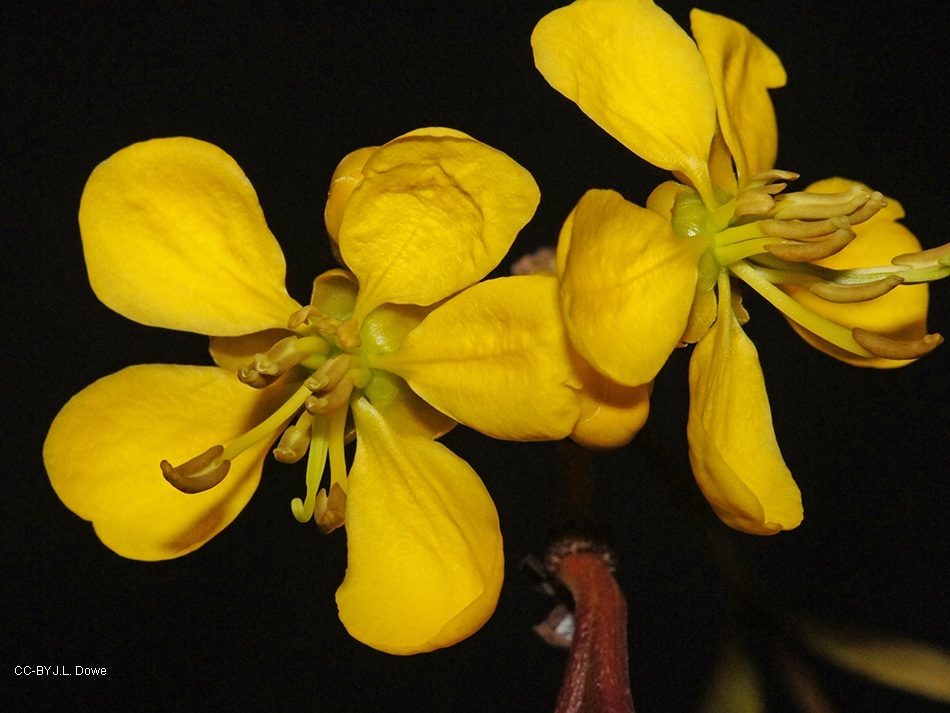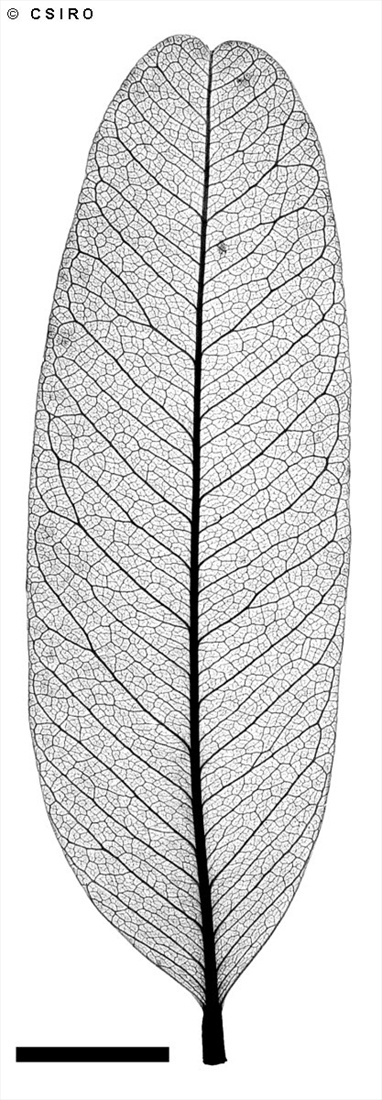Australian Tropical Rainforest Plants - Online edition
Senna siamea (Lam.) H.S.Irwin & Barneby



Irwin, H.S. & Barneby, R.C. (1982) Memoirs New York Botanical Garden 35: 98.
Cassia, Siamese; Kassod Tree; Siamese Cassia
Usually grows into a small tree.
Compound leaves with about 8-20 leaflets. Leaflet blades about 32-60 x 12-30 mm, leaflet stalks about 4-5 mm long. Leaflet apex emarginate with a mucro in the sinus. Compound leaf rhachis flat and grooved on the upper surface. Lateral veins forming loops inside the leaflet blade margins. Stipules small and inconspicuous, about 0.5-1 mm long. Crushed leaves emit an unpleasant odour.
Fruits about 16-20 cm long. Seeds about 10-20 per pod, each seed about 8-9 x 5-6 mm, flat and thin, testa marked by a depressed central area (pleurogram). Radicle about 2 mm long. Cotyledons about 6 mm long with distinct venation.
Cotyledons +/- orbicular, about 17 x 13 mm, petioles very short, about 1 mm long. First leaf compound with two leaflets each about 19 x 10 mm, leaflet stalks about 1.5 mm long. Third leaf compound with five leaflets each about 8-11 x 3-5 mm, leaflet stalks about 1 mm long. At the tenth leaf stage: leaf pinnate with 10-14 leaflets, leaflets elliptic-lanceolate, apex apiculate, base obtuse. Rhachis grooved on the upper surface. Usually several bristle-like caducous glands present on the rhachis between the pairs of leaflets. Terminal bud clothed in short silky hairs. Seed germination time 158 days.
An introduced species originally from India and SE Asia now naturalised in CYP and NEQ, records from WA and NT but not considered natualised (in 2015). Altitudinal range from near sea level to 300 m but grows in cultivation at altitudes to 750 m. Originally cultivated but now also found in gallery forests along the creeks and rivers.





